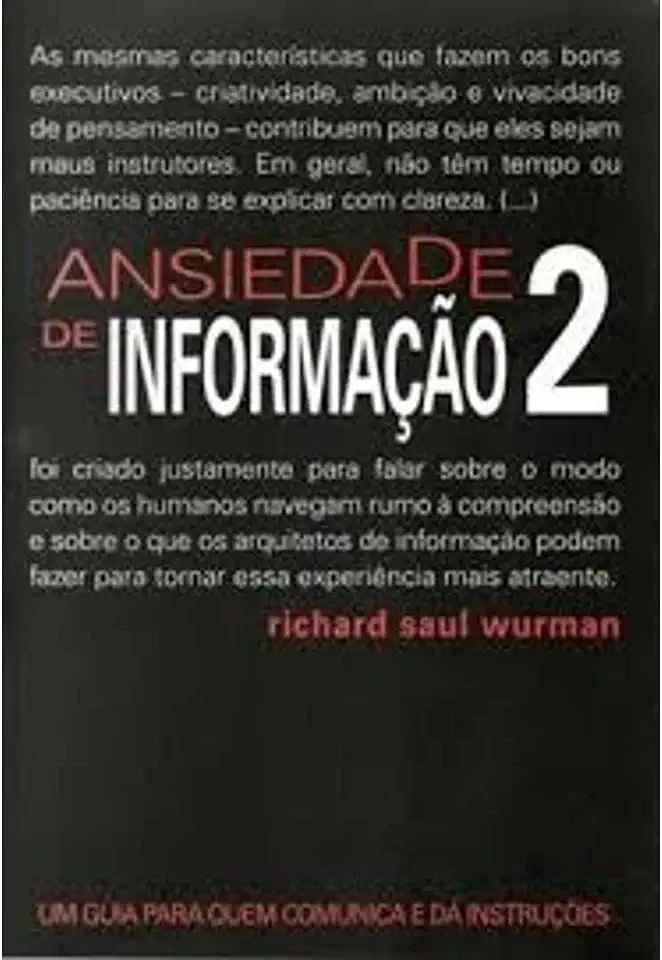
Information Anxiety - Richard Saul Wurman
Information Anxiety: What You Need to Know and Do About It
In the age of information overload, it's easy to feel overwhelmed and anxious. We're constantly bombarded with data from all sides, and it can be difficult to know how to process it all. In his book, "Information Anxiety," Richard Saul Wurman argues that we need to develop new ways of managing information in order to thrive in the 21st century.
The Problem of Information Overload
Wurman begins by describing the problem of information overload. He points out that the amount of information available to us has been growing exponentially in recent years, and it shows no signs of slowing down. This growth is due to a number of factors, including the rise of the internet, the proliferation of mobile devices, and the increasing use of data analytics.
As a result of this information overload, we are constantly feeling overwhelmed and anxious. We don't know how to find the information we need, and we're afraid of missing out on something important. This anxiety can lead to a number of problems, including stress, burnout, and decision paralysis.
The Solution: Information Architecture
Wurman argues that the solution to information overload is information architecture. Information architecture is the art and science of organizing and presenting information in a way that makes it easy to find and use. By using information architecture principles, we can create systems that help us manage the flow of information and make better decisions.
Wurman discusses a number of information architecture principles in his book, including:
- Chunking: Breaking down information into smaller, more manageable pieces.
- Hierarchical organization: Organizing information into a hierarchy, with the most important information at the top.
- Visual cues: Using visual cues to help users navigate information.
- Simplicity: Keeping things simple and easy to understand.
By following these principles, we can create information systems that are more effective and less anxiety-provoking.
The Benefits of Information Architecture
Wurman argues that information architecture has a number of benefits, including:
- Increased productivity: Information architecture can help us find the information we need more quickly and easily, which can lead to increased productivity.
- Reduced stress: Information architecture can help us reduce stress by making it easier to manage the flow of information.
- Improved decision-making: Information architecture can help us make better decisions by providing us with the information we need in a clear and concise way.
- Enhanced creativity: Information architecture can help us be more creative by giving us new ways to think about and organize information.
Conclusion
In conclusion, "Information Anxiety" is a must-read for anyone who wants to thrive in the age of information overload. Wurman provides a clear and concise explanation of the problem of information overload and offers a number of practical solutions. By following the principles of information architecture, we can create information systems that are more effective and less anxiety-provoking.
Enjoyed the summary? Discover all the details and take your reading to the next level — [click here to view the book on Amazon!]